Performance Analysis of the Supercritical Carbon Dioxide Re-compression Brayton Cycle
Abstract
:1. Introduction
2. Methodology
2.1. Cycle Processes
2.2. Design Parameters
2.3. Energy and Exergy Analysis
- Pressure drops in the heat exchangers and pipes are neglected.
- Steady-state operation is assumed for all the devices in the system.
- Heat loss from the components is negligible.
2.4. Total Heat Transfer Area Coefficient and Total Size Parameter Value (SPTotal)
2.5. Properties of
3. Results and Discussion
3.1. Thermal Efficiency (ηth)
3.2. Exergy Efficiency (ηex) and Irreversibility Ratio (IR)
3.3. Exergy Destruction in Different Components
3.4. Heat Transfer Area Coefficient (UA) and Turbomachinery Size (SP) Values
4. Conclusions
- The thermal performance of the considered system is highly sensitive to the turbine’s inlet temperate and split mass fraction. For every set of imposed boundary conditions, there exists an optimal value of split mass fraction that tends to minimize the temperature difference between LTR outlet and HTR inlet. It can be concluded that the optimal values of split mass fraction increase with the increase of turbine inlet temperature. Furthermore, the optimal value of the split mass fraction is found as 0.74, corresponding to the turbine inlet temperature of °C for which cycle’s efficiency () is 4.
- The maximum of the cycle’s efficiency comes at high total heat transfer area coefficient () values that in turn increase the cost of the heat exchanger. On the other hand, the cost of the heat exchanger can be reduced by moving the compressor’s inlet temperature away from the critical temperature or by lowering the turbine inlet temperature. However, in both scenarios, the cycle’s thermal efficiency shall be compromised. Therefore, an optimal trade-off can be established between and depending on the design objective.
- Exergy destruction is high for high turbine and main inlet temperatures and compressor inlet pressures. The gas cooler is the biggest source of exergy destruction in the cycle. Moreover, exergy destruction for the summer seasons was higher than the winter seasons. The system exergy destruction ( has the lowest value of 390 kW at 35 °C and 24 MPa in the month of January.
- The size parameter (SP) of the turbine increases with increasing turbine inlet temperature, whereas that of the compressor shows an increase when the main compressor inlet temperature increases. This implies that the total size parameter () value of the system increases with increasing turbine and compressor inlet temperatures, which the increase the cost of the turbomachinery under these conditions.
5. Future Work
- For the re-compression Brayton cycle, the thermal efficiency can be further increased if the heat available at the gas cooler is utilized to generate more power. This can be achieved by using the cycle in a cascade arrangement with an ORC as a bottoming cycle.
- A tri-generation system can be designed such that the multiple benefits of power, heating and cooling can be obtained from the system. Combined power and heating/cooling systems have the advantage of increasing efficiency by bringing multiple benefits into play.
- The performance of the system can be further improved if the system is optimized using a genetic algorithm such that the investment/maintenance costs of the system are minimized, and at the same time, the efficiency of the system is maximized. For this purpose, multi-objective optimization can be used using variables such as and to minimize the cost of the heat exchangers and turbomachinery in the system. Furthermore, and can be used to maximize the efficiency of the system whilst minimizing the exergy destruction due to irreversibilities. The input variables within the most suitable bounded constraints can be defined in the optimization code.
Author Contributions
Funding
Conflicts of Interest
Nomenclature
| Symbols and abbreviations | |
| Specific heat capacity | |
| e | Specific exergy of flow [J/kg] |
| E | Exergy rate [W] |
| h | Specific enthalpy [J/kg] |
| I | Exergy destruction [W] |
| IR | Irreversibility ratio of the system |
| m | Mass flow rate [kg/s] |
| P | Pressure [Pa] |
| Q | Heat rate [W] |
| s | Specific entropy [J/kg.K] |
| SP | Turbomachinery size factor |
| SP | Size parameter [m] |
| T | Temperature [K] |
| UA | Heat transfer area coefficient [W/K] |
| W | Power [W] |
| x | Split mass fraction |
| Abbreviations | |
| GC | Gas cooler |
| HTR | High temperature recuperator |
| HX | Primary heat exchanger |
| LTR | Low temperature recuperator |
| max | Maximum |
| min | Minimum |
| Supercritical Carbon dioxide | |
| ΔTM | Log mean temperature difference |
| Greek symbols | |
| η | Efficiency |
| ε | Recuperator effectiveness |
| Temperature difference | |
| Subscripts | |
| c | Cold side |
| Carbon dioxide | |
| h | Hot side |
| HTR | High temperature recuperator |
| HX | Primary heat exchanger |
| in | Property at inlet |
| LTR | Low temperature recuperator |
| MC | Main compressor |
| out | Property at outlet |
| ex | Exergy |
| RC | Re-compressor |
| s | Isentropic process |
| th | Thermal |
| T | Turbine |
| w | Water |
| 0 | Dead state |
| 1,2,3, | State points |
References
- IPCC. Climate Change 2014: Synthesis Report. Contribution of Working Groups I, II and III to the Fifth Assessment Report of the Intergovernmental Panel on Climate Change; IPCC: Geneva, Switzerland, 2014; ISBN 9789291691432. [Google Scholar]
- Mudasar, R.; Aziz, F.; Kim, M.-H. Thermodynamic analysis of organic Rankine cycle used for flue gases from biogas combustion. Energy Convers. Manag. 2017, 153, 627–640. [Google Scholar] [CrossRef]
- Yağli, H.; Koç, Y.; Koç, A.; Görgülü, A.; Tandiroğlu, A. Parametric optimization and exergetic analysis comparison of subcritical and supercritical organic Rankine cycle (ORC) for biogas fuelled combined heat and power (CHP) engine exhaust gas waste heat. Energy 2016, 111, 923–932. [Google Scholar] [CrossRef]
- Nasir, M.T.; Kim, K.C. Working fluids selection and parametric optimization of an Organic Rankine Cycle coupled Vapor Compression Cycle (ORC-VCC) for air conditioning using low grade heat. Energy Build. 2016, 129, 378–395. [Google Scholar] [CrossRef]
- Liu, X.; Wei, M.; Yang, L.; Wang, X. Thermo-economic analysis and optimization selection of ORC system configurations for low temperature binary-cycle geothermal plant. Appl. Therm. Eng. 2017, 125, 153–164. [Google Scholar] [CrossRef]
- Mudasar, R.; Kim, M.-H. Experimental study of power generation utilizing human excreta. Energy Convers. Manag. 2017, 147, 86–99. [Google Scholar] [CrossRef]
- Singh, H.; Mishra, R.S. Performance evaluation of the supercritical organic rankine cycle (SORC) integrated with large scale solar parabolic trough collector (SPTC) system: An exergy energy analysis. Environ. Prog. Sustain. Energy 2018, 37, 891–899. [Google Scholar] [CrossRef]
- Saeed, M.; Kim, M. Analysis of a recompression supercritical carbon dioxide power cycle with an integrated turbine design/optimization algorithm. Energy 2018, 165, 93–111. [Google Scholar] [CrossRef]
- Ahn, Y.; Bae, S.J.; Kim, M.; Cho, S.K.; Baik, S.; Lee, J.I.; Cha, J.E. Review of supercritical CO2 power cycle technology and current status of research and development. Nucl. Eng. Technol. 2015, 47, 647–661. [Google Scholar] [CrossRef] [Green Version]
- Brun, K.; Friedman, P.; Dennis, R. (Eds.) Fundamentals and Applications of Supercritical Carbon Dioxide (sCO2) Based Power Cycles; Woodhead Publishing, Elsevier Science: Cambridge, UK, 2017; ISBN 9780081008058. [Google Scholar]
- Crespi, F.; Gavagnin, G.; Sánchez, D.; Martínez, G.S. Supercritical carbon dioxide cycles for power generation: A review. Appl. Energy 2017, 195, 152–183. [Google Scholar] [CrossRef]
- Saeed, M.; Khatoon, S.; Kim, M.-H. Design optimization and performance analysis of a supercritical carbon dioxide recompression Brayton cycle based on the detailed models of the cycle components. Energy Convers. Manag. 2019, 196, 242–260. [Google Scholar] [CrossRef]
- Aziz, F.; Mudasar, R.; Kim, M.-H. Exergetic and heat load optimization of high temperature organic Rankine cycle. Energy Convers. Manag. 2018, 171, 48–58. [Google Scholar] [CrossRef]
- Macchi, E.; Perdichizzi, A. Efficiency prediction for axial-flow turbines operating with non conventional fluids. J. Eng. Power 1981, 103, 718–724. [Google Scholar] [CrossRef]
- Aziz, F.; Salim, M.S.; Kim, M.-H. Performance analysis of high temperature cascade organic Rankine cycle coupled with water heating system. Energy 2019, 170, 954–966. [Google Scholar] [CrossRef]
- Patel, B.; Desai, N.B.; Kachhwaha, S.S. Optimization of waste heat based organic Rankine cycle powered cascaded vapor compression-absorption refrigeration system. Energy Convers. Manag. 2017, 154, 576–590. [Google Scholar] [CrossRef]
- MATLAB—MathWorks-R2017a (Version 9.2). 2017. Available online: https://www.mathworks.com/products/new_products/release2017a.html(accessed on 12 February 2020).
- Lemmon, E.; Mc Linden, M.; Huber, M. NIST Reference Fluid Thermodynamic and Transport Properties Database: REFPROP Version 9.1, NIST Standard Reference Database 23. 2013. Available online: http://www.boulder.nist.gov (accessed on 25 December 2017).
- Busan Ambient Temperature Data. Available online: https://en.climate-data.org/asia/south-korea/busan/busan-4114/ (accessed on 15 September 2019).
- Moran, M.J.; Shapiro, H.N.; Boettner, D.D.; Bailey, M.B. Principles of Engineering Thermodynamics, 7th ed.; John Wiley & Sons: Hoboken, NJ, USA, 2012. [Google Scholar]
- Gao, H.; Liu, C.; He, C.; Xu, X.; Wu, S.; Li, Y. Performance analysis and working fluid selection of a supercritical organic Rankine cycle for low grade waste heat recovery. Energies 2012, 5, 3233–3247. [Google Scholar] [CrossRef]
- Saeed, M.; Kim, M.-H. Thermal and hydraulic performance of SCO2 PCHE with different fin configurations. Appl. Therm. Eng. 2017, 127, 975–985. [Google Scholar] [CrossRef]
- Dostal, V.; Driscoll, M.J.; Hejzlar, P. A Supercritical Carbon Dioxide Cycle for Next Generation Nuclear Reactors, MIT-ANP-TR-100, Advanced Nuclear Power Technology Program Report; Massachusetts Institute of Technology: Cambridge, MA, USA, 2004. [Google Scholar]
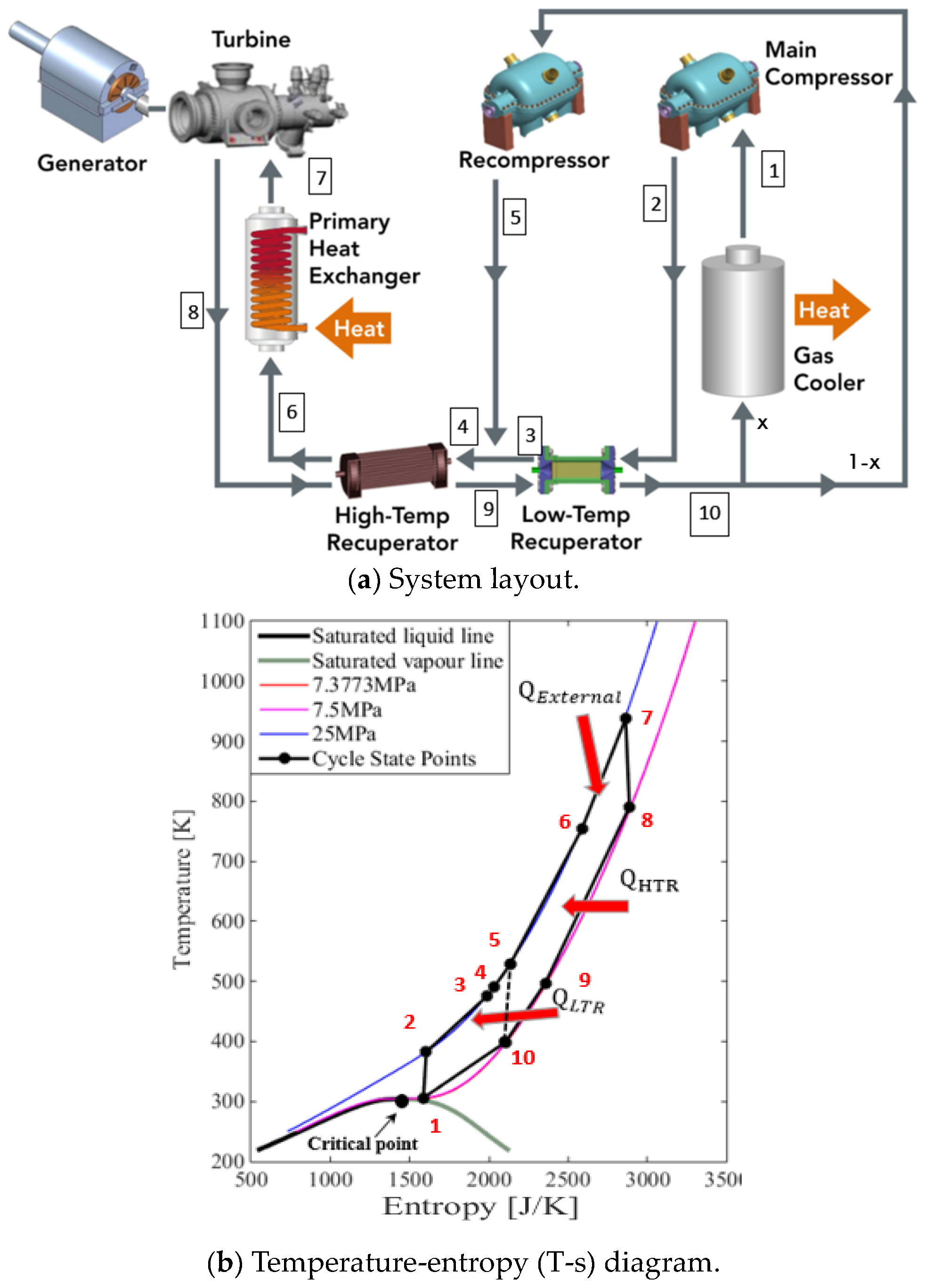





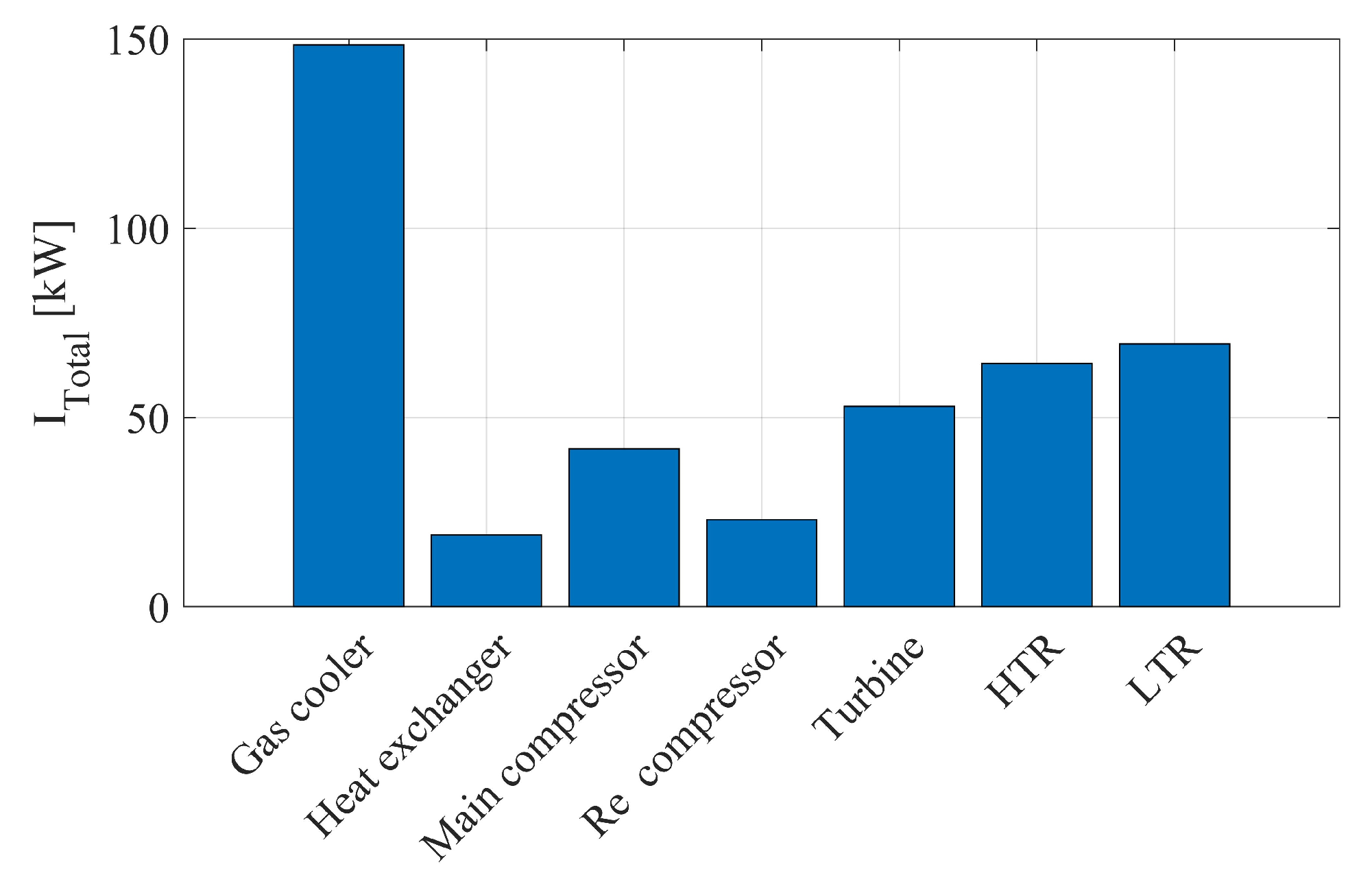
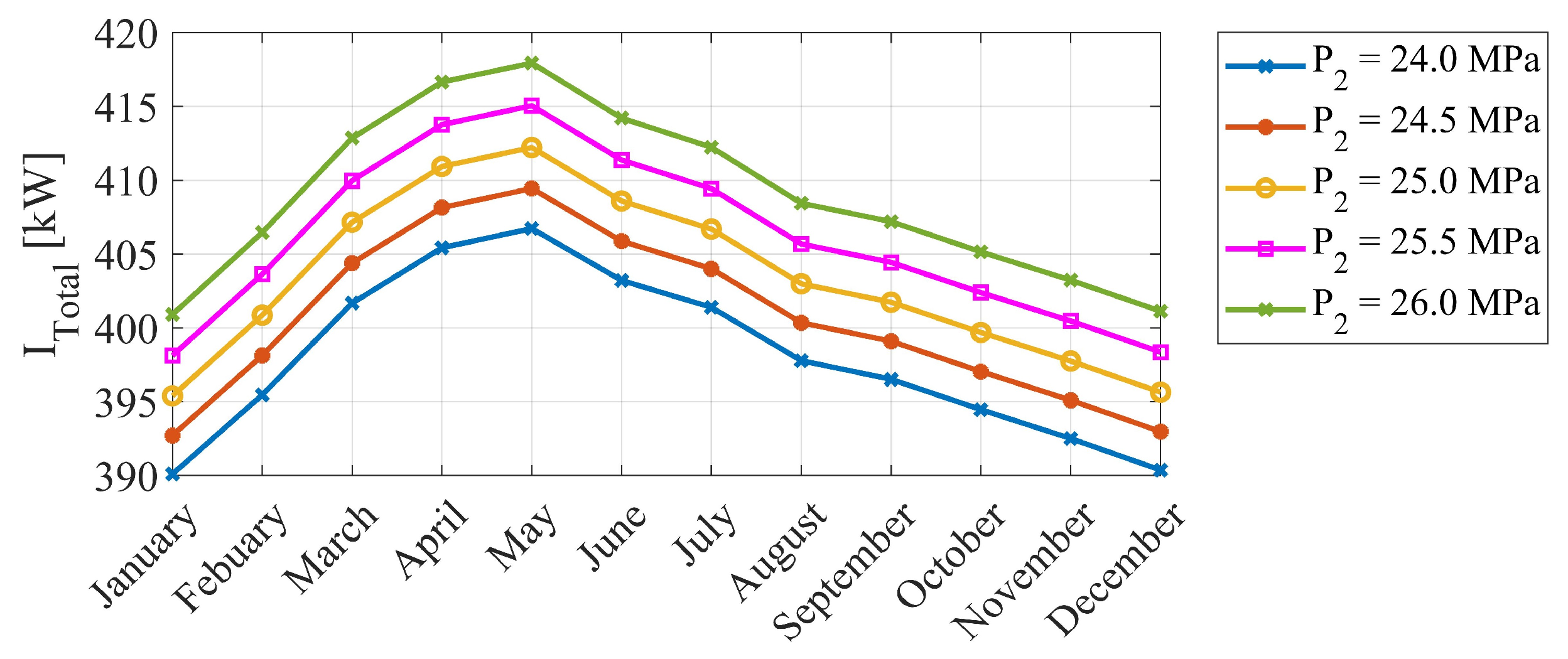
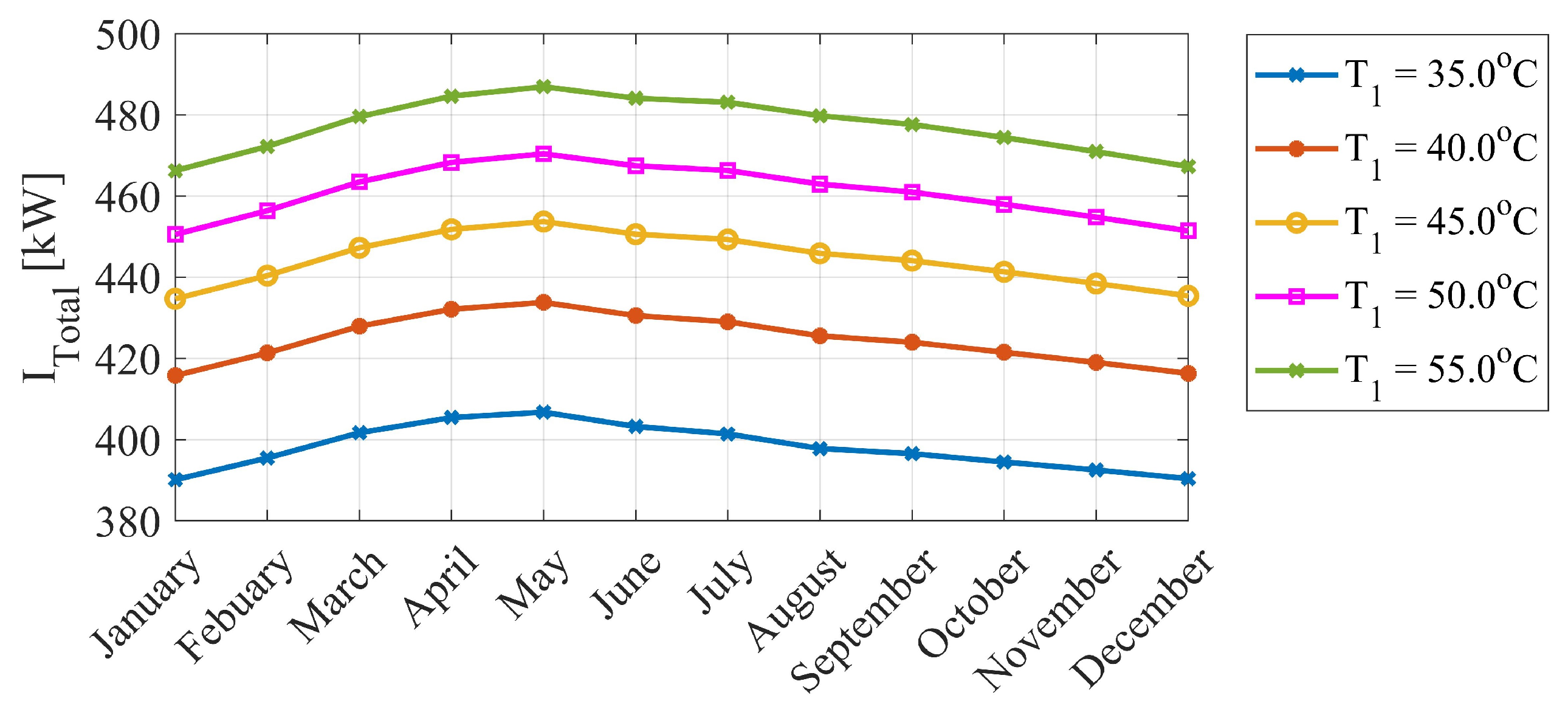

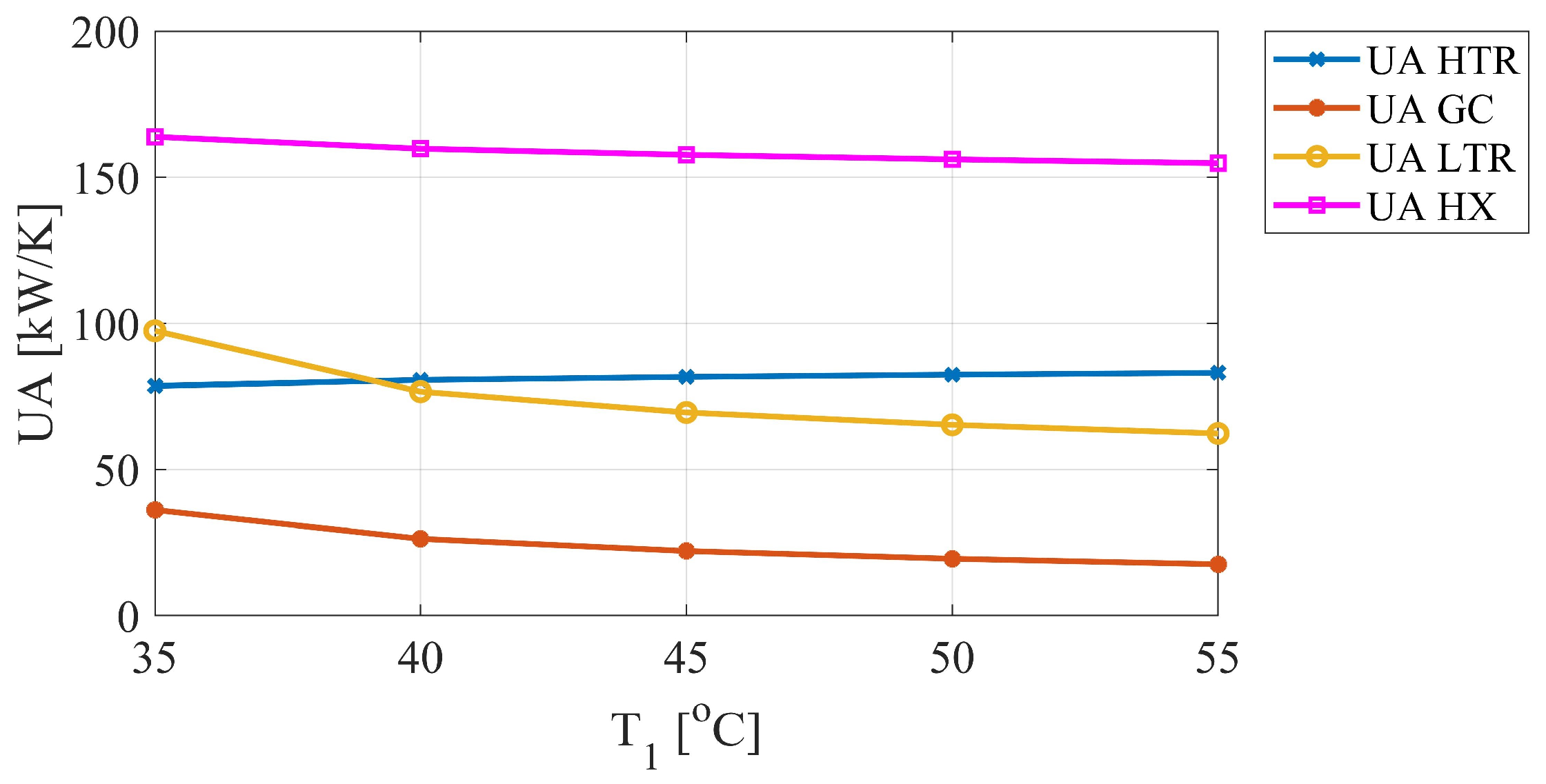
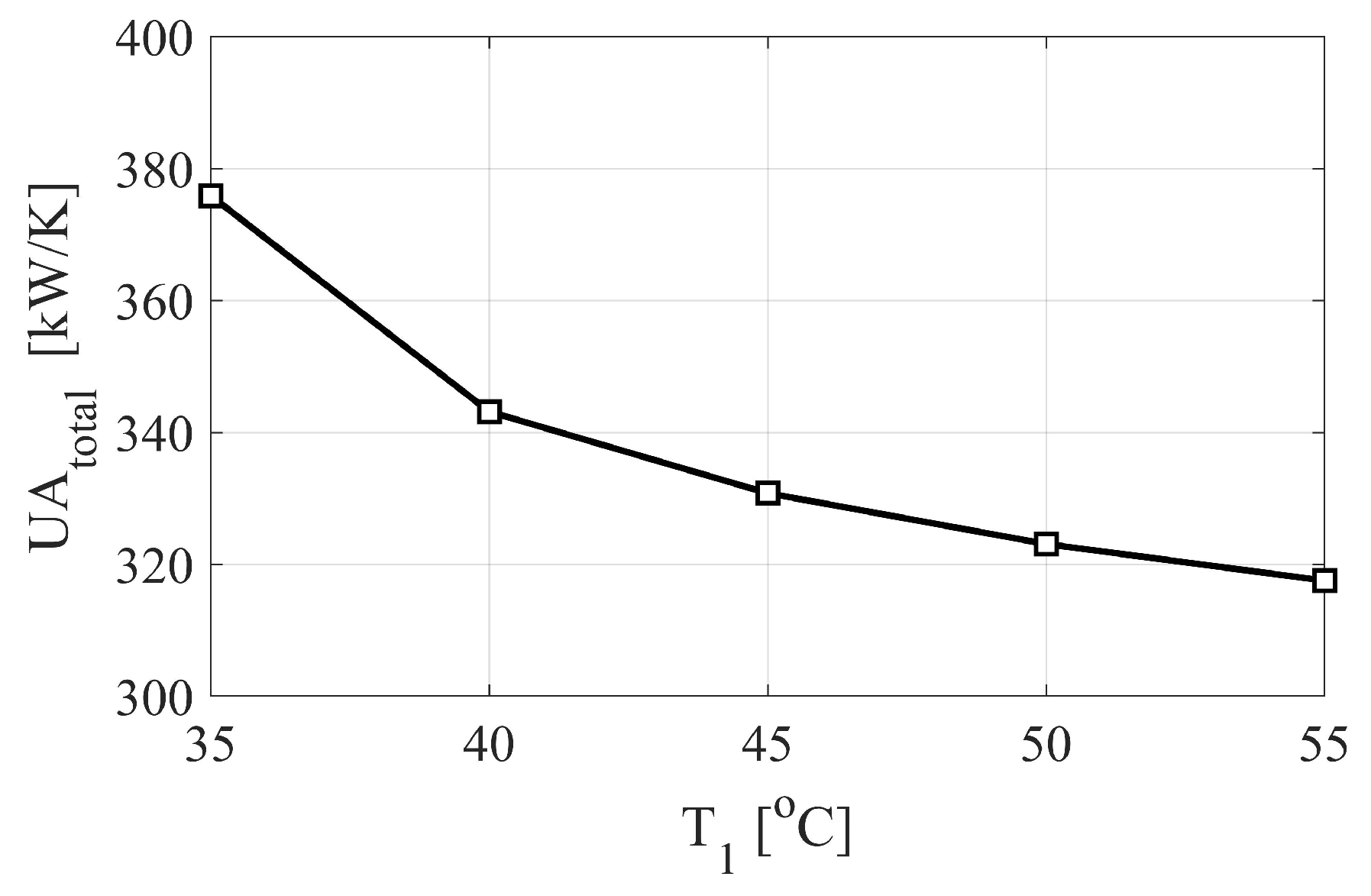

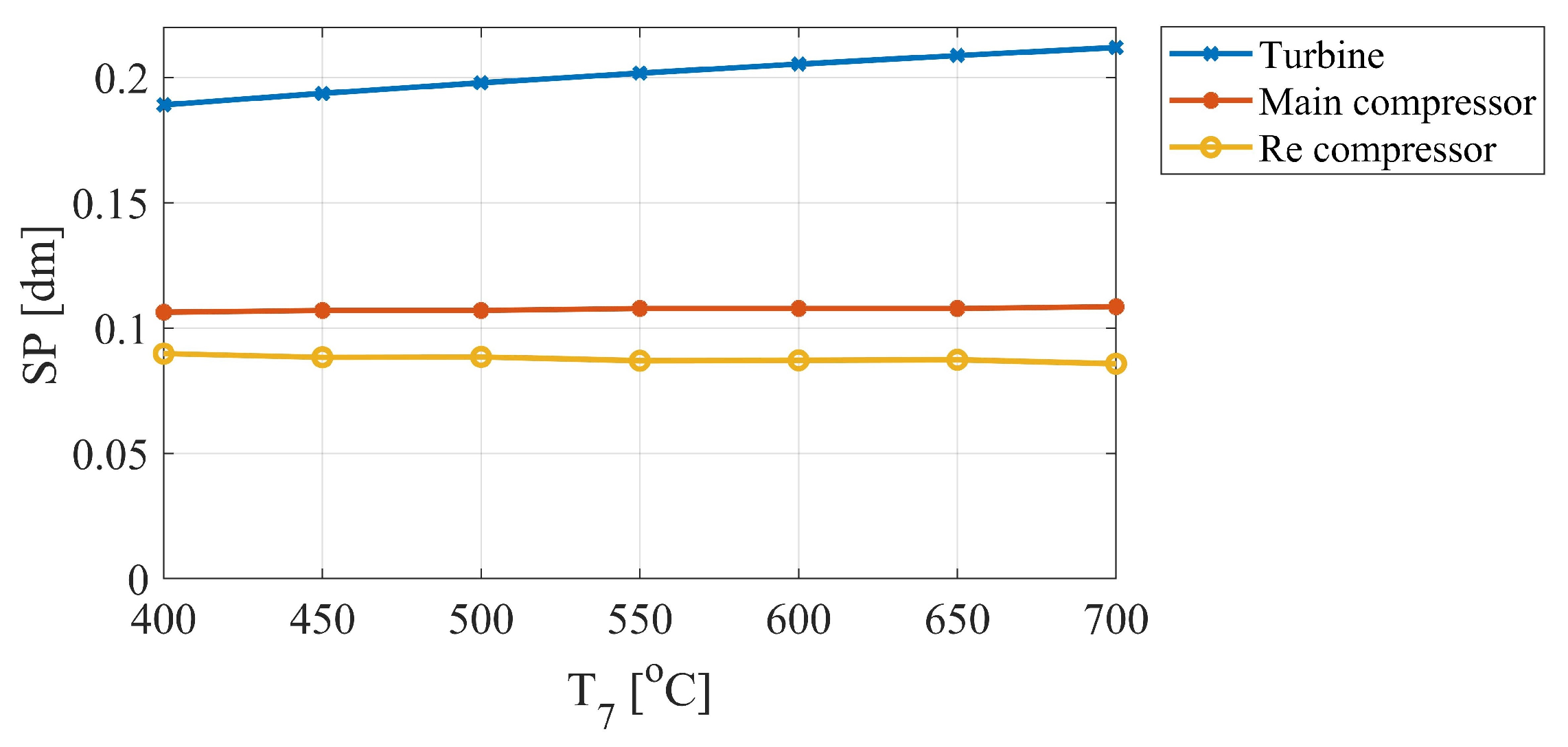

| Parameter | Symbol | Value |
|---|---|---|
| mass flow rate, kg/s | 10 | |
| Main compressor inlet temperature, °C | 35 | |
| Main compressor inlet pressure, MPa | 7.8 | |
| Main compressor outlet pressure, MPa | 24 | |
| Main compressor isentropic efficiency | 0.85 | |
| Re-compressor isentropic efficiency | 0.85 | |
| Turbine isentropic efficiency | 0.93 | |
| Effectiveness of the HTR | 0.90 | |
| Effectiveness of the LTR | 0.90 | |
| Ambient temperature (other than seasonal exergy analysis), °C | T0 | 24.5 |
| Ambient pressure, MPa | P0 | 0.1 |
| Water inlet temperature in the gas cooler (other than seasonal exergy analysis), °C | 23.7 | |
| Water outlet temperature in the gas cooler, °C | 40 |
| Molar Mass (g/mol) | Critical Pressure (MPa) | Critical Temperature (°C) | ODP | GWP |
|---|---|---|---|---|
| 44.01 | 7.4 | 31.0 | 0 | 1 |
© 2020 by the authors. Licensee MDPI, Basel, Switzerland. This article is an open access article distributed under the terms and conditions of the Creative Commons Attribution (CC BY) license (http://creativecommons.org/licenses/by/4.0/).
Share and Cite
Salim, M.S.; Saeed, M.; Kim, M.-H. Performance Analysis of the Supercritical Carbon Dioxide Re-compression Brayton Cycle. Appl. Sci. 2020, 10, 1129. https://doi.org/10.3390/app10031129
Salim MS, Saeed M, Kim M-H. Performance Analysis of the Supercritical Carbon Dioxide Re-compression Brayton Cycle. Applied Sciences. 2020; 10(3):1129. https://doi.org/10.3390/app10031129
Chicago/Turabian StyleSalim, Mohammad Saad, Muhammad Saeed, and Man-Hoe Kim. 2020. "Performance Analysis of the Supercritical Carbon Dioxide Re-compression Brayton Cycle" Applied Sciences 10, no. 3: 1129. https://doi.org/10.3390/app10031129
APA StyleSalim, M. S., Saeed, M., & Kim, M.-H. (2020). Performance Analysis of the Supercritical Carbon Dioxide Re-compression Brayton Cycle. Applied Sciences, 10(3), 1129. https://doi.org/10.3390/app10031129






